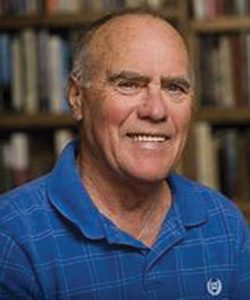By David Freeze
As I write this, the farm accident occurred 20 days ago. I came home from the hospital after just three nights there. Sleep wouldn’t come and I couldn’t have been more uncomfortable trying to heal without it. The doctor asked me if I felt OK going home, and while totally surprised, I was glad to do it.
Arriving home, I was extremely limited, both by plenty of rules and discomfort throughout my body. The nurse’s going home instructions said, “If it doesn’t feel good, you shouldn’t be doing it. You are the one who can mess up this recovery.” What I realized very soon was that nothing felt good. Not even sitting and certainly not standing.
I have been sleeping well, but only in a recliner. I can’t lie down in a bed without aggravating the back. I was concerned about swelling in my legs and feet and poor balance. Both the spine doctor and Pam Roseman, Doctor of Physical Therapy said, “You need to start walking as soon as you can tolerate it.” They assured me that a lot of the swelling and back inflammation would be lessened with that.
I couldn’t walk 10 steps without a walker or resting when I came home. The last four mornings, I have worked my way up to .66 of a mile although most of it has been in the driveway. Balance is slowly returning so in a few days I will try the road. I can also stand for more than five minutes in one place, and I can climb stairs slowly. The swelling in my feet and legs is gone. Bending is improving, within the prescribed limits.
Progress is being made and I credit the ongoing huge amount of prayers and community support. Thank you!! Another doctor’s visit is set for three weeks. Running remains far down the road. But I never will take walking for granted again!
I revisited a term called active recovery this past week. Beginning to consistently walk will help me, but for other runners and athletes there are some tips that help too. Aches and pains are typical for those who exercise regularly. But active recovery will help lessen those problem areas. Here are some examples that incorporate gentle movement.
During a sprinting workout, walk at a moderate pace in between sprints. During a strength workout, do some light calisthenics between sets instead of standing around. While waiting for the ball to enter your area during a soccer game, run in place to keep the heart rate up.
After a hard bike ride or run, slowly keep the wheels turning or the legs moving to end the session with easy movement. After a moderate run, walk or jog slowly at about a 40 to 50% effort.
You can even make good use of a rest day. For runners, ride a stationary bike or climb on an elliptical. Other options are walking with a friend, using a rowing machine or swimming laps. Spend some quality time with a foam roller.
These listed activities are also good options on the day after a race. I have always found better recovery by doing something instead of just lying in bed. Even after a marathon, your body wants to move. In fact, one of my best memories was walking a mile back to the hotel after the New York City Marathon. The dreaded soreness was much less of a factor the next day. But don’t ruin any of these things by taking a long hot bath. Soreness and inflammation will follow for the muscles that you just did good things for.
Our next race is the Shiloh Missions 5K in Faith on Saturday, June 29th. Look for it and other events at www.salisburyrowanrunners.org







